#plantae
Explore tagged Tumblr posts
Text

Lelietje-van-dalen of meiklokje (Convallaria majalis). 14-05-2021
“Flowers of a Lily of the valley Focus stack of 18 photos.” - via Wikimedia Commons
#picture of the day 04/21/2025#picture of the day#lily of the valley#wikipedia#wikipedia pictures#wikimedia commons#nature#plants#flowers#Convallaria majalis#lily-of-the-valley#plantae#tracheophytes#angiosperms#monocots#asparagales#asparagaceae#nolinoideae#plantblr#flower#botany#horticulture#wikipedia picture of the day#photo of the day#focus stack
40 notes
·
View notes
Text
Transparent Pets and the Transparent Chia

for background, Transparent is a cosmetic option one can change their Neopet to. for the mostly mammalian cast of Neopets, this typically shows the internal anatomy of the Neopet as if their skin and cartilage were transparent, displaying their skeleton and visible internal organs.



there are some notable examples among them: the Transparent Lenny has bones in its primary feathers, explaining their hand-like dexterity with those feathers! (other bird Neopets, like the Pteri, do not have these bones).

there's also the Grundo's alien organs, and the Ruki, which is an insect and thus has an exoskeleton, has a much different internal structure from its mammal counterparts


there's a lot we could get into here with the perceived anatomical correctness of these designs; the number of bones and placement or lack of certain organs is definitely not one would expect in a detailed anatomical diagram. but none of that is really important beyond what these designs signify about the species classification-wise, and the one new major outlier: the Transparent Chia

the Transparent Chia is unlike all other Neopets who have received Transparent designs. it is green; it does not have bones; it has unique organs; it resembles a plant cell.
below is my attempt to label the Transparent Chia as if it were a textbook diagram of a plant cell. I'm only an amateur biologist, so I discussed with some friends, including professional biologist @stackedcrates who taught me a lot!

(footnotes are below)
1 - Root Hairs: As I've been told it, root hairs would typically 1) comprise the full green shape of the hair and not just the pink inside, and 2) a cell with root hairs would not have chloroplasts. So if we accept the hair as root hairs, this is either a "novel evolutionary adaptation" or possibly the Chia is comprised of two to four large cells and potentially a colonial organism, which I find exciting.
2 - Vesicles, Peroxisomes, Lysosomes: It's impossible to actually distinguish these things from each other so I labelled them half based on evidence and half arbitrarily. Lysosomes are typically larger than peroxisomes, but both could also be most any other 'some. (Vesicles are not 'somes but they look similar in this type of diagram).
3 - The Endoplasmic Reticulum & Large Central Vacuole: In normal cells, the endoplasmic reticulum would touch the nucleus, so this ER is in a very unusual if not impossible spot. We floated the possibilities that we were wrong about the nucleus, the nucleus was actually what we'd labelled as the LCV, and even that our ER was just the rough ER and the yellow noodles (now labelled "Cytoskeletal Structures") were a very unusual smooth ER. But it seems overly likely that we're correct about the LCV and the nucleus, so I preferred this admittedly unsatisfying option compared to the rest.
4 - Chloroplasts and Mitochondria: You might notice that the chloroplasts as labelled have two different designs: one is striped while the other is simply green. The committee found the two similar enough to group them together, and I'm told it's common for the chloroplast to be depicted either way (I found more than one diagram that this art seems to be cribbing colors and design choices from). As for the mitochondria, it's possible that we have the chloroplasts and mitochondria swapped, and it's just as possible possible one of the three labelled is some other plastid that we didn't consider.
5 - Cytoskeletal Structures: We have no idea what these are. They're not really the right shape to be skeletal structures. Oh well!
6 - Amyloplast: @stackedcrates suggested this was an amyloplast, for storing starch, but that it could be another kind of plastid.
this attempt has many issues, but the real purpose of it is to prove that the Chia very closely resembles a plant cell, rather than correctly identify each part. @stackedcrates also emphasized that biology is full of exceptions, and with the Chia necessarily representing an unusual example, it doesn't behoove us to be beholden to statistical typicality. a few mistakes or professional disagreements are okay! in the end, it matters more that the parts are roughly represented.
I think we did well!
What does this mean for the project?
we'll be hereforth categorizing the Chia as among Plantae rather than Animalia. there was evidence for this before as the Chia is the only Neopet to have the unique Magical Chia Pop colors. the Maraquan Chia is also an anenome, which is an animal, but definitely the most plant-like of the aquatic animals.
maybe one could argue the Chia is a fungus, or even an animal-plant hybrid! where does that go in our taxonomy? I don't know! but science is exciting, isn't it?
404 notes
·
View notes
Text

A flowering coastal plain honeycombhead (Balduina angustifolia) in Gilchrist County, Florida, USA
by Alex Roukis
93 notes
·
View notes
Text

Diphylleia Grayi !
In northern Japan and the forests of China you can see these flowers that look normal but when they come into contact with water their petals become transparent.
#art#surreal#photography#funnyshit#fun#flowers#glass flower#petals#diphyllia grayi#japan#china#water#transparent#skeleton#umbrella leaf#plantae#nature#nature photography
67 notes
·
View notes
Note
Whats the difference between lichen, moss, mould and mushrooms if they're all fungus? Aren't they all the same sorta thing?
so, interestingly, all of these groups are very different !! instead of naming the differences, let me quickly explain what exactly these organisms are.
lichen :
lichens are symbiotic organisms, meaning they are in themselves the product of a relationship between different organisms. to simplify it, lichens are big part fungus, & smaller part algae (protista) or cyanobacteria (monera). these different forms of life together create lichen, which grows on trees, rocks, leaves, mosses & sometimes other lichens !! to read more about lichens, check out @/lichenaday's blog :-)
moss :
mosses are actually not fungi at all !! they are small, flowerless plants. they grow on trees & in soil. :-)
mould :
mould is a type of structure that fungi can form - it is entirely fungal. it reproduces through airborne spores :-) there are many different types of mould ; some are toxic, some are used medicinally, & some are saprotrophs. (note : slime moulds & water moulds are unrelated to fungal moulds !!)
mushrooms :
so, lots of people think mushrooms are a species of fungus, but they are not. "mushroom" refers to the fruiting body of a fungus ; what a mushroom is to a fungus is comparable to what a flower is to a tree - the part that reproduces !! not all fungi produce mushrooms (e.g. moulds, which do not have fruiting bodies as the entire organism is able to release spores). there are currently only 14 000 discovered fungi that produce mushrooms !! more fungi that don't produce mushrooms include mildew, yeast & lichen.
so, yes !! they're all quite different in structure, cells & function in the ecosystem.
#please let me know if i should explain any of these further - i'm always happy to !!#except moss.. i'm not really a bryology expert ^^"#but the rest i am more than happy to continue about !!#• askbox replies: •#(ask : luminousmoon21)#||#fungi#fungus#mycology#mushrooms#mushroom#earth#nature#science#moss#lichen#mould#mold#slime mould#plantae#protists
574 notes
·
View notes
Text
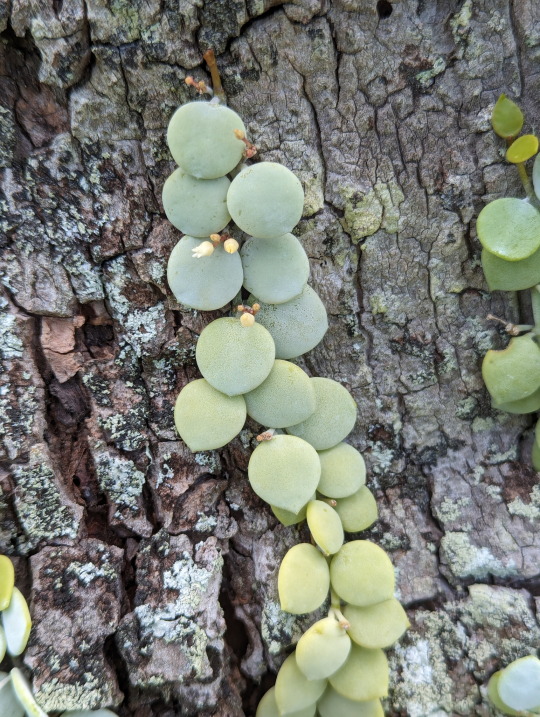
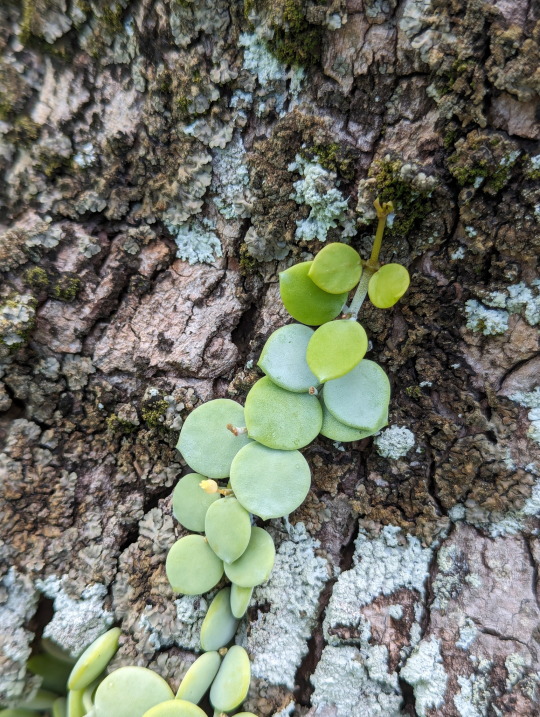

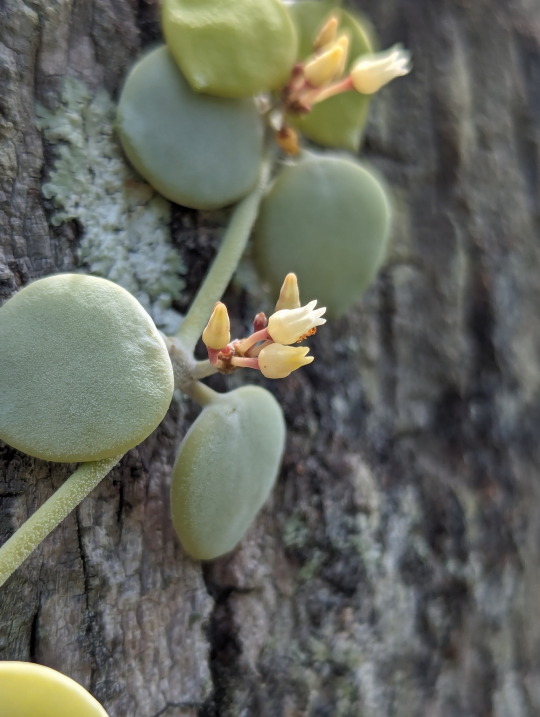

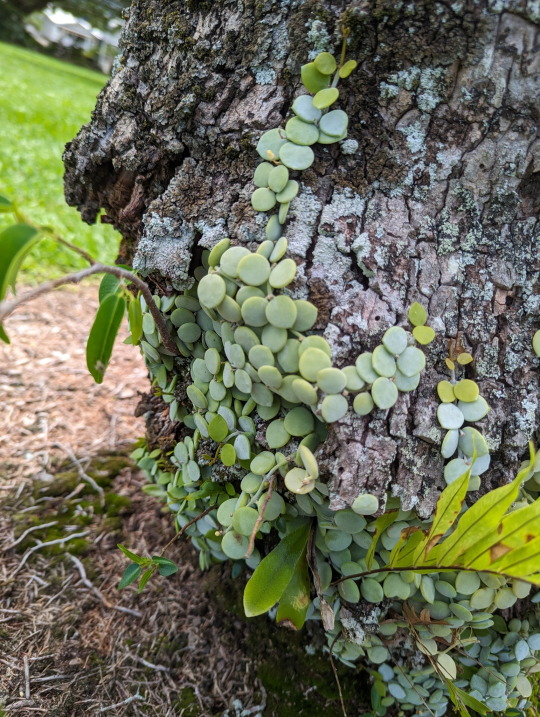
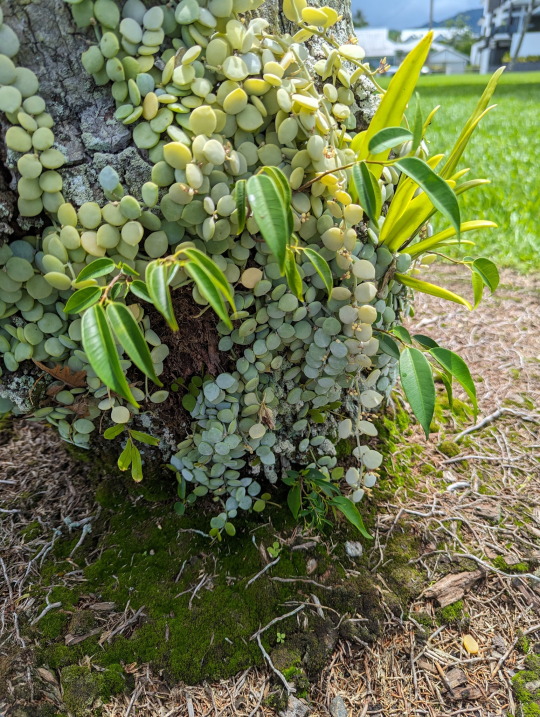
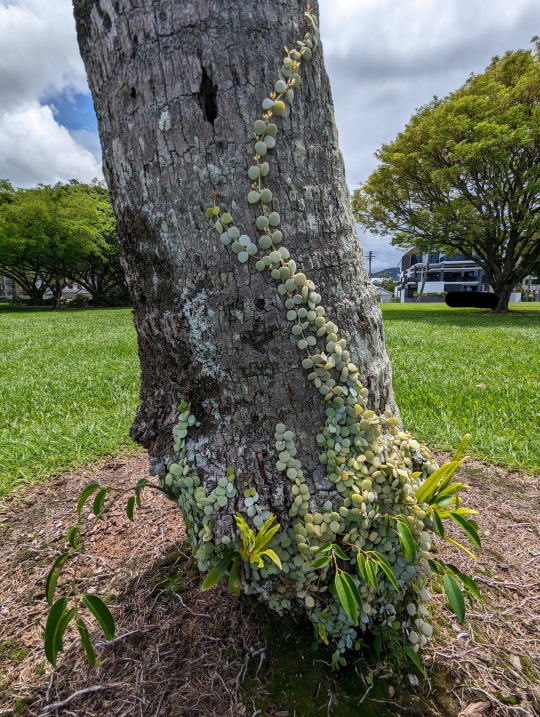
Beautiful button orchid growing on a palm tree.
17/01/24 - Dischidia nummularia
QLD:WET - Cairns
#nature#Dischidia nummularia#Button Orchid#Plantae#plants#botany#Milkweeds#Gentianales#Magnoliopsida#Dicots#Angiospermae#Flowering Plants#angiosperms#Tracheophyta#Vascular Plants
165 notes
·
View notes
Text

some hairy white oldfield asters, aka an aster of many names (i'm 99% sure) from my first invertebrate expedition of the year earlier today. as a treat
#yap sematary#plantae#plantlife#flowers#greenery#garden#plants#asterids#asterales#asteraceae#asteroideae#astereae#plantblr#botany#symphyotrichum pilosum#symphyotrichum#aster pilosus#hairy white oldfield aster#frost aster#white heath aster#health aster#hairy aster#common old field aster#old field aster#awl aster#nailrod#steelweed
6 notes
·
View notes
Text

vegetable I
#plantae#collage art#collage#mixed media#mixed media art#surrealism#text art#typo#typography#found poetry collage#collages#surreal#surreal art#weird art#dark art#surrealist art#symbolism#liminal aesthetic#liminal#liminal spaces#dreamcore#weirdcore#liminalcore
13 notes
·
View notes
Text




10 notes
·
View notes
Text

Finally got around to revamping my oc, Aurum! He's… A terrible person :D;; haha He's one of my buddy @leeviathans's Plantae species, and he's also the father of one of Lee's characters as well! (tho said fella doesn't want anything to do with him- for good reason.) He's based on a golden delicious apple & a pitcher plant! The latter is a bit of a secret for most folks- since he doesn't broadcast that part of his lineage out in the open. I tried to sneak subtle nods to it in his design! ;)
24 notes
·
View notes
Text
Finished just in time for Halloween AAAAAA! Here's my plantae OC trio as classic horrors!



Venus as a venomous vampire, Wheatly as a wicked witch and Pudica as a powerful poltergeist! (..The alliteration theming was unintentional I only noticed as I typed it lol)
#My art#Plantae#OC#original character#Halloween#Almost forgot to post cause I'm too distracted with evil booping people#Get booped blasted you barnacles
8 notes
·
View notes
Text

Galanthus Nivalis, sneeuwklokje. 12-02-2024. (d.j.b.)
“Galanthus nivalis double-flowered Snowdrop. Focus stack of 44 photos.” - via Wikimedia Commons
#picture of the day#picture of the day 02/12/2025#galanthus nivalis#common snowdrop#snowdrop#nature photography#wikipedia#wikipedia pictures#wikimedia commons#nature#plants#flora#flowers#plantae#plant aesthetic#plant life#tracheophytes#angiosperms#monocots#Asparagales#asparagoid lilies#Amaryllidaceae#Amaryllidoideae#flowering plants#botany#botanical#photography#plant photography#snowdrops#plantblr
15 notes
·
View notes
Text
A Comprehensive Look at Neopian Apples
[-> Part 1 <-] [ Part 2A ] [ Part 2B ] [ Part 3 - coming soon ]
The Neopian Biology Project has identified >90 items with the word "Apple" in the name that are worth considering as species candidates.
Previously, I tried to categorize these items in roughly alphabetical order, but this time I've tried a new approach. Essentially, I made a few "buckets" that a candidate could fall into, and hoped that by correlating candidates to buckets, the trickier determinations could be made easier.
Because there are 90+ "apple" candidates, I won't be posting every single apple's information. However I will be linking their Jellyneo pages, and you can always find information relevant to the project on our spreadsheet.
First up:
Part 1: Apples that aren't apples

These are candidates that may qualify as distinct species, but are only referred to as "apple" colloquially, and are not actually apples.
These are:
Blue Ice Apple - From space; alien.
Imposter Apple [sic] - "That's no apple!" Possibly a common orange.
Flat Apple Fruit - Neither apple nor Flatfruit
Grapple - Not to be confused for the Grapple Apple.
Pearapple - Species of pear.
Triapple
Arnapple
Blackapple - See below.
Dewy Apple
Pineapple
Pyrapple - Possibly a pineapple. See below.
Many of these species make reference to tasting like an apple, which in these cases I have chosen to take as unironic comparisons rather than some joking "it tastes like an apple because it is an apple!" These specimens also all have un-apple-like (unapfellich) features that make them easy to consider them non-apples, at least morphologically.
The two exceptions/uncertainties are the Pyrapple and Blackapple.
The Pyrapple is not an apple, for certain, but may be a Pineapple. We'll either explore it in another post about Neopian Pineapples, or in its own post, but not here.
The Blackapple requires a closer look:

I hope the inside is not as black as the outside.
There isn't much to go off of here. This specimen is from Apple Bobbing, but if you take all the Apple Bobbing specimens together, this isn't a good indicator of apfellichkeit ("apple-ness"). Both non-apple and apple species are mixed up in Apple Bobbing, and some of the apple species are qualifying candidates while some are variants of other apples (we'll discuss this more in the next part).
The description is also very typical of Apple Bobbing and specimens from the Haunted Woods in general — that specific brand of Neopets humor that hints at something that should concern you, but won't tell you the full extent of the problem or how it occurred. This kind of description has influenced me greatly as a writer and is also the bane of my existence as a scientist.
The deciding factor for me here is that the Blackapple isn't a Black Apple, or a Blackened Apple as we'll see some of later. Blackapple is a new word, akin to the made-up "Triapple," "Arnapple," and "Pineapple" above. Because of this, I have been swayed to consider the Blackapple a unique, non-apple species.
Next up:
Part 2A: Apple cultivars ->
#neopian biology project#neopets#haunted woods#plantae#Blue Ice Apple#Imposter Apple#Flat Apple Fruit#Grapple#Pearapple#Triapple#Arnapple#Blackapple#Dewy Apple#Pineapple#Pyrapple#Apple Bobbing#comprehensive apples#the fact that this is already so long
37 notes
·
View notes
Text
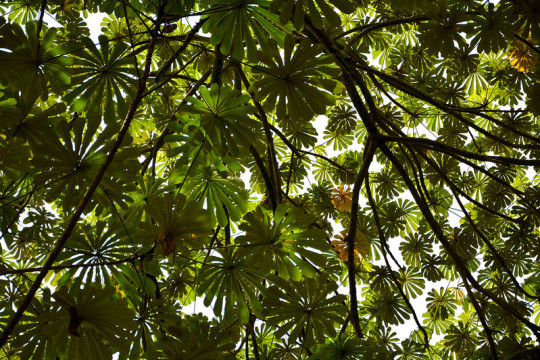
An African corkwood tree (Musanga cecropioides) in Uganda
by Julien NKS
#african corkwood tree#trees#plants#musanga cecropioides#musanga#Urticaceae#rosales#plantae#flora: uganda#flora: africa
223 notes
·
View notes
Note
Ooooo, hi hi! I've got a poll! What's everyone's favorite kingdom? Not like a monarchy lol, but Animalia, Plantae, Fungi, Protista, Archaeabacteria, or (Eu)Bacteria! I really like Fungi! :D
#plants#animals#protists#bacteria#fungi#microorganisms#biology#kingdoms of life#animalia#plantae#protista#archaebacteria#eubacteria#poll#polls#tumblr polls#augmented polls#requested polls
13 notes
·
View notes
